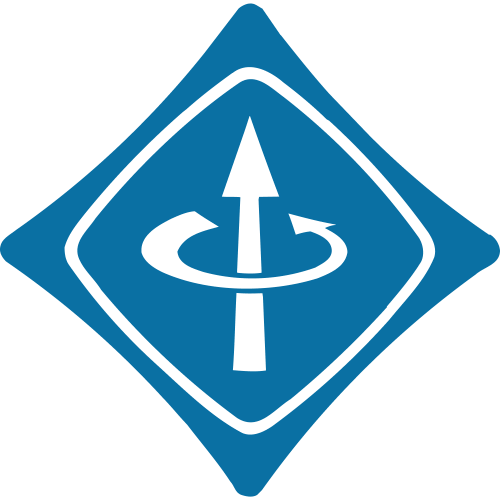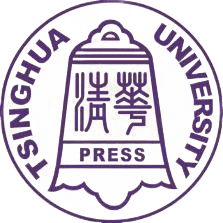Ligand-Assisted Reconstruction of Colloidal Quantum Dots Decreases Trap State Density
Bin Sun
1
,
Maral Vafaie
1
,
Larissa Levina
1
,
Mingyang Wei
1
,
Yitong Dong
1
,
Yajun Gao
2
,
Hao Ting Kung
3
,
Margherita Biondi
1
,
Andrew H. Proppe
1, 4
,
Bin Chen
1
,
Min-Jae Choi
1
,
Laxmi Kishore Sagar
1
,
Oleksandr Voznyy
1
,
Shana Kelley
4, 5
,
Frédéric Laquai
2
,
Zheng-Hong Lu
3
,
Sjoerd Hoogland
1
,
F. Pelayo García de Arquer
1
,
Publication type: Journal Article
Publication date: 2020-03-31
scimago Q1
wos Q1
SJR: 2.967
CiteScore: 14.9
Impact factor: 9.1
ISSN: 15306984, 15306992
PubMed ID:
32227970
General Chemistry
Condensed Matter Physics
General Materials Science
Mechanical Engineering
Bioengineering
Abstract
Increasing the power conversion efficiency (PCE) of colloidal quantum dot (CQD) solar cells has relied on improving the passivation of CQD surfaces, enhancing CQD coupling and charge transport, and advancing device architecture. The presence of hydroxyl groups on the nanoparticle surface, as well as dimers-fusion between CQDs-has been found to be the major source of trap states, detrimental to optoelectronic properties and device performance. Here, we introduce a CQD reconstruction step that decreases surface hydroxyl groups and dimers simultaneously. We explored the dynamic interaction of charge carriers between band-edge states and trap states in CQDs using time-resolved spectroscopy, showing that trap to ground-state recombination occurs mainly from surface defects in coupled CQD solids passivated using simple metal halides. Using CQD reconstruction, we demonstrate a 60% reduction in trap density and a 25% improvement in charge diffusion length. These translate into a PCE of 12.5% compared to 10.9% for control CQDs.
Found
Nothing found, try to update filter.
Found
Nothing found, try to update filter.
Top-30
Journals
|
1
2
3
4
5
6
7
|
|
|
ACS applied materials & interfaces
7 publications, 11.11%
|
|
|
Nano Research
4 publications, 6.35%
|
|
|
Nano Letters
3 publications, 4.76%
|
|
|
Small
3 publications, 4.76%
|
|
|
Advanced Materials
3 publications, 4.76%
|
|
|
ACS Energy Letters
2 publications, 3.17%
|
|
|
ACS Applied Energy Materials
2 publications, 3.17%
|
|
|
Energy and Environmental Science
2 publications, 3.17%
|
|
|
Advanced Science
2 publications, 3.17%
|
|
|
Applied Physics Reviews
1 publication, 1.59%
|
|
|
International Journal of Molecular Sciences
1 publication, 1.59%
|
|
|
Energies
1 publication, 1.59%
|
|
|
Nanomaterials
1 publication, 1.59%
|
|
|
Nature Communications
1 publication, 1.59%
|
|
|
Journal of Materials Science: Materials in Electronics
1 publication, 1.59%
|
|
|
Science China: Physics, Mechanics and Astronomy
1 publication, 1.59%
|
|
|
Applied Surface Science
1 publication, 1.59%
|
|
|
Materials Today Chemistry
1 publication, 1.59%
|
|
|
Japanese Journal of Applied Physics, Part 1: Regular Papers & Short Notes
1 publication, 1.59%
|
|
|
Nano Today
1 publication, 1.59%
|
|
|
Advanced Energy Materials
1 publication, 1.59%
|
|
|
International Journal of Quantum Chemistry
1 publication, 1.59%
|
|
|
Journal of Physical Chemistry C
1 publication, 1.59%
|
|
|
Chemical Reviews
1 publication, 1.59%
|
|
|
ACS Nano
1 publication, 1.59%
|
|
|
Chemistry of Materials
1 publication, 1.59%
|
|
|
IEEE Transactions on Electron Devices
1 publication, 1.59%
|
|
|
Solar RRL
1 publication, 1.59%
|
|
|
Journal of Physical Chemistry Letters
1 publication, 1.59%
|
|
|
Small Science
1 publication, 1.59%
|
|
|
1
2
3
4
5
6
7
|
Publishers
|
2
4
6
8
10
12
14
16
18
20
|
|
|
American Chemical Society (ACS)
19 publications, 30.16%
|
|
|
Wiley
15 publications, 23.81%
|
|
|
Elsevier
7 publications, 11.11%
|
|
|
Springer Nature
6 publications, 9.52%
|
|
|
MDPI
4 publications, 6.35%
|
|
|
Royal Society of Chemistry (RSC)
4 publications, 6.35%
|
|
|
AIP Publishing
2 publications, 3.17%
|
|
|
Tsinghua University Press
2 publications, 3.17%
|
|
|
Science in China Press
1 publication, 1.59%
|
|
|
Japan Society of Applied Physics
1 publication, 1.59%
|
|
|
Institute of Electrical and Electronics Engineers (IEEE)
1 publication, 1.59%
|
|
|
Autonomous Non-profit Organization Editorial Board of the journal Uspekhi Khimii
1 publication, 1.59%
|
|
|
2
4
6
8
10
12
14
16
18
20
|
- We do not take into account publications without a DOI.
- Statistics recalculated weekly.
Are you a researcher?
Create a profile to get free access to personal recommendations for colleagues and new articles.
Metrics
63
Total citations:
63
Citations from 2024:
25
(39.69%)
Cite this
GOST |
RIS |
BibTex |
MLA
Cite this
GOST
Copy
Sun B. et al. Ligand-Assisted Reconstruction of Colloidal Quantum Dots Decreases Trap State Density // Nano Letters. 2020. Vol. 20. No. 5. pp. 3694-3702.
GOST all authors (up to 50)
Copy
Sun B., Vafaie M., Levina L., Wei M., Dong Y., Gao Y., Kung H. T., Biondi M., Proppe A. H., Chen B., Choi M., Sagar L. K., Voznyy O., Kelley S., Laquai F., Lu Z., Hoogland S., Pelayo García de Arquer F., Sargent E. H. Ligand-Assisted Reconstruction of Colloidal Quantum Dots Decreases Trap State Density // Nano Letters. 2020. Vol. 20. No. 5. pp. 3694-3702.
Cite this
RIS
Copy
TY - JOUR
DO - 10.1021/acs.nanolett.0c00638
UR - https://doi.org/10.1021/acs.nanolett.0c00638
TI - Ligand-Assisted Reconstruction of Colloidal Quantum Dots Decreases Trap State Density
T2 - Nano Letters
AU - Sun, Bin
AU - Vafaie, Maral
AU - Levina, Larissa
AU - Wei, Mingyang
AU - Dong, Yitong
AU - Gao, Yajun
AU - Kung, Hao Ting
AU - Biondi, Margherita
AU - Proppe, Andrew H.
AU - Chen, Bin
AU - Choi, Min-Jae
AU - Sagar, Laxmi Kishore
AU - Voznyy, Oleksandr
AU - Kelley, Shana
AU - Laquai, Frédéric
AU - Lu, Zheng-Hong
AU - Hoogland, Sjoerd
AU - Pelayo García de Arquer, F.
AU - Sargent, Edward H.
PY - 2020
DA - 2020/03/31
PB - American Chemical Society (ACS)
SP - 3694-3702
IS - 5
VL - 20
PMID - 32227970
SN - 1530-6984
SN - 1530-6992
ER -
Cite this
BibTex (up to 50 authors)
Copy
@article{2020_Sun,
author = {Bin Sun and Maral Vafaie and Larissa Levina and Mingyang Wei and Yitong Dong and Yajun Gao and Hao Ting Kung and Margherita Biondi and Andrew H. Proppe and Bin Chen and Min-Jae Choi and Laxmi Kishore Sagar and Oleksandr Voznyy and Shana Kelley and Frédéric Laquai and Zheng-Hong Lu and Sjoerd Hoogland and F. Pelayo García de Arquer and Edward H. Sargent},
title = {Ligand-Assisted Reconstruction of Colloidal Quantum Dots Decreases Trap State Density},
journal = {Nano Letters},
year = {2020},
volume = {20},
publisher = {American Chemical Society (ACS)},
month = {mar},
url = {https://doi.org/10.1021/acs.nanolett.0c00638},
number = {5},
pages = {3694--3702},
doi = {10.1021/acs.nanolett.0c00638}
}
Cite this
MLA
Copy
Sun, Bin, et al. “Ligand-Assisted Reconstruction of Colloidal Quantum Dots Decreases Trap State Density.” Nano Letters, vol. 20, no. 5, Mar. 2020, pp. 3694-3702. https://doi.org/10.1021/acs.nanolett.0c00638.














